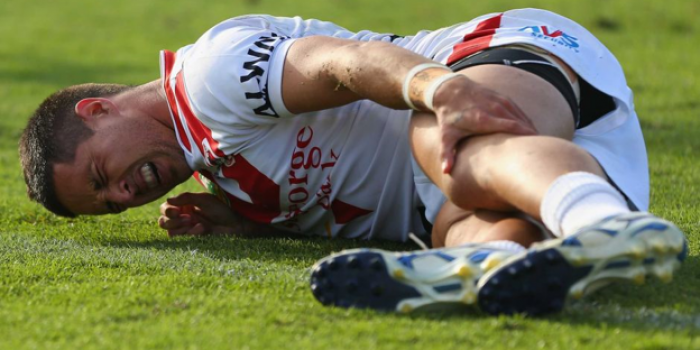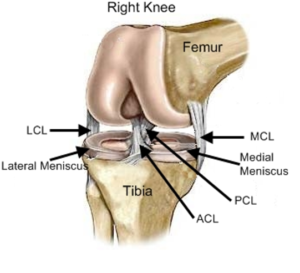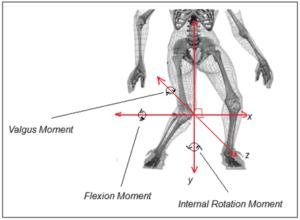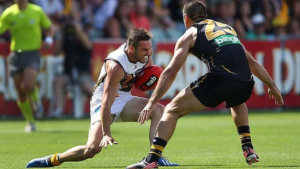- 0438 310 585
- info@principia.com.au

The ligaments of the knee serve a number of mechanical functions to help constrain the joint’s motion within its defined range. They also work in partnership with the muscles and articular surfaces in transmitting loads across the joint. The anterior cruciate ligament or ACL is one of the four major ligaments of the knee. The others are the posterior cruciate ligament (PCL), medial collateral ligament (MCL) and lateral collateral ligament (LCL), that act to provide structural support and restraint (Figure 1).

Figure 1: The anatomy of the ACL (right knee). Image from (www.performanceorthosports.com).
The ACL’s primary role is to constrain anterior tibial translation, or forward motion of the lower leg bone. However due to the number of movements that can occur at the knee joint, several scenarios may load the ACL (Figure 2). Each of these particular loading scenarios in isolation have the ability to place strain on the ACL, but their combined effects have been shown in cadaveric studies to place more strain on the ACL than each scenario alone1–3. These scenarios may include varus or valgus moments, internal rotation moments, tibial anterior draw force from knee extensor moments and tibial anterior draw force from compressive joint contact forces.

Figure 2: The moments or torques that load the ACL including flexion, valgus and internal rotation during sidestepping.
In sport the majority of ACL injuries occur in non-contact situations whilst performing manoeuvres including sidestepping and single leg landing4,5. Video analysis has shown the majority of ACL injuries occur early after initial ground contact with knee flexion angles less than 30-degrees, and giving way in valgus and internal rotation4,6.Whilst direct measurement of the forces experienced by the ligament is not possible due to its invasiveness, the loads inferred to the ligament may be estimated using a computational approach. Previous laboratory studies using such approaches have shown sidestepping and single leg landing to produce larger valgus and internal rotation moments when compared to straight running7–9.
It appears these particular manoeuvers create body postures with an extended and internally rotated lower limb that are associated with higher peak valgus and internal rotation moments (Figure 3), which may infer large forces to the ligament9,10.

Figure 3: An AFL footballer sustaining an ACL injury during a sidestep movement. Note the way the knee gives way in valgus and internal rotation.
It is well established in cadaveric work, that high valgus and internal rotation moments at the knee in extended knee postures, as well as compressive joint contact forces can highly load the ACL. Collectively, this suggests that sporting manoeuvres including sidestepping and single leg landing may reflect the postures that load the ACL. Ultimately from a mechanical point of view, an ACL injury will occur when the above mentioned loads applied to the ligament are greater than the capacity to withstand it.
References
Copyright @2019 l Principia Technology. All rights reserved. Website design Media Highway